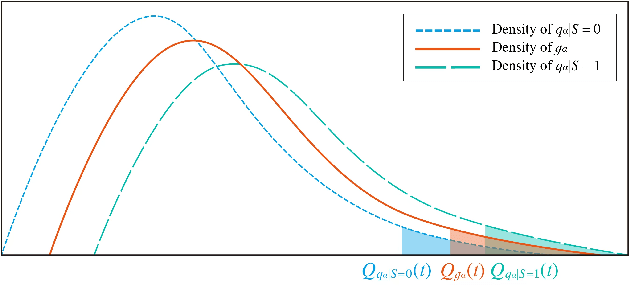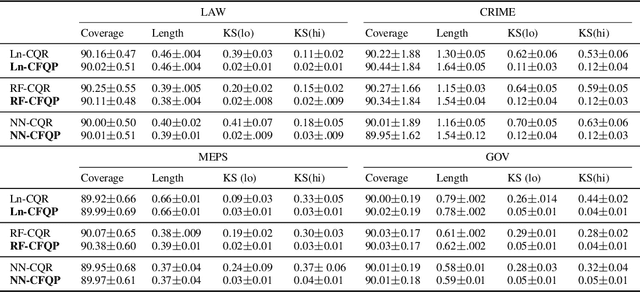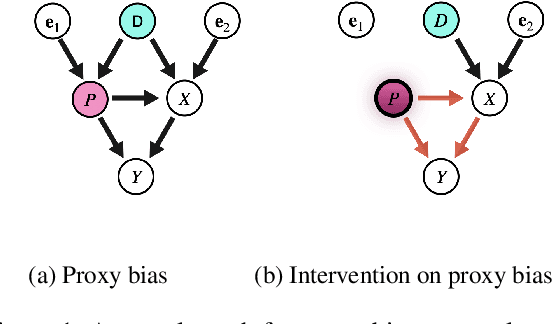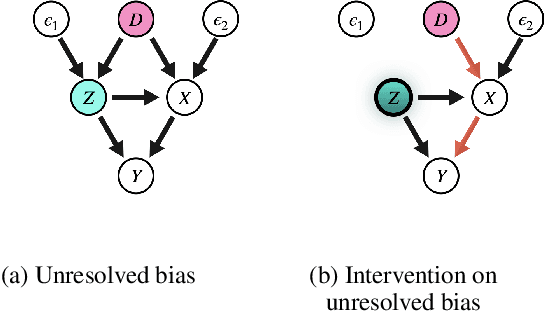Dengdeng Yu
Conformalized Fairness via Quantile Regression
Oct 05, 2022



Abstract:Algorithmic fairness has received increased attention in socially sensitive domains. While rich literature on mean fairness has been established, research on quantile fairness remains sparse but vital. To fulfill great needs and advocate the significance of quantile fairness, we propose a novel framework to learn a real-valued quantile function under the fairness requirement of Demographic Parity with respect to sensitive attributes, such as race or gender, and thereby derive a reliable fair prediction interval. Using optimal transport and functional synchronization techniques, we establish theoretical guarantees of distribution-free coverage and exact fairness for the induced prediction interval constructed by fair quantiles. A hands-on pipeline is provided to incorporate flexible quantile regressions with an efficient fairness adjustment post-processing algorithm. We demonstrate the superior empirical performance of this approach on several benchmark datasets. Our results show the model's ability to uncover the mechanism underlying the fairness-accuracy trade-off in a wide range of societal and medical applications.
Word Embeddings via Causal Inference: Gender Bias Reducing and Semantic Information Preserving
Dec 09, 2021



Abstract:With widening deployments of natural language processing (NLP) in daily life, inherited social biases from NLP models have become more severe and problematic. Previous studies have shown that word embeddings trained on human-generated corpora have strong gender biases that can produce discriminative results in downstream tasks. Previous debiasing methods focus mainly on modeling bias and only implicitly consider semantic information while completely overlooking the complex underlying causal structure among bias and semantic components. To address these issues, we propose a novel methodology that leverages a causal inference framework to effectively remove gender bias. The proposed method allows us to construct and analyze the complex causal mechanisms facilitating gender information flow while retaining oracle semantic information within word embeddings. Our comprehensive experiments show that the proposed method achieves state-of-the-art results in gender-debiasing tasks. In addition, our methods yield better performance in word similarity evaluation and various extrinsic downstream NLP tasks.
 Add to Chrome
Add to Chrome Add to Firefox
Add to Firefox Add to Edge
Add to Edge